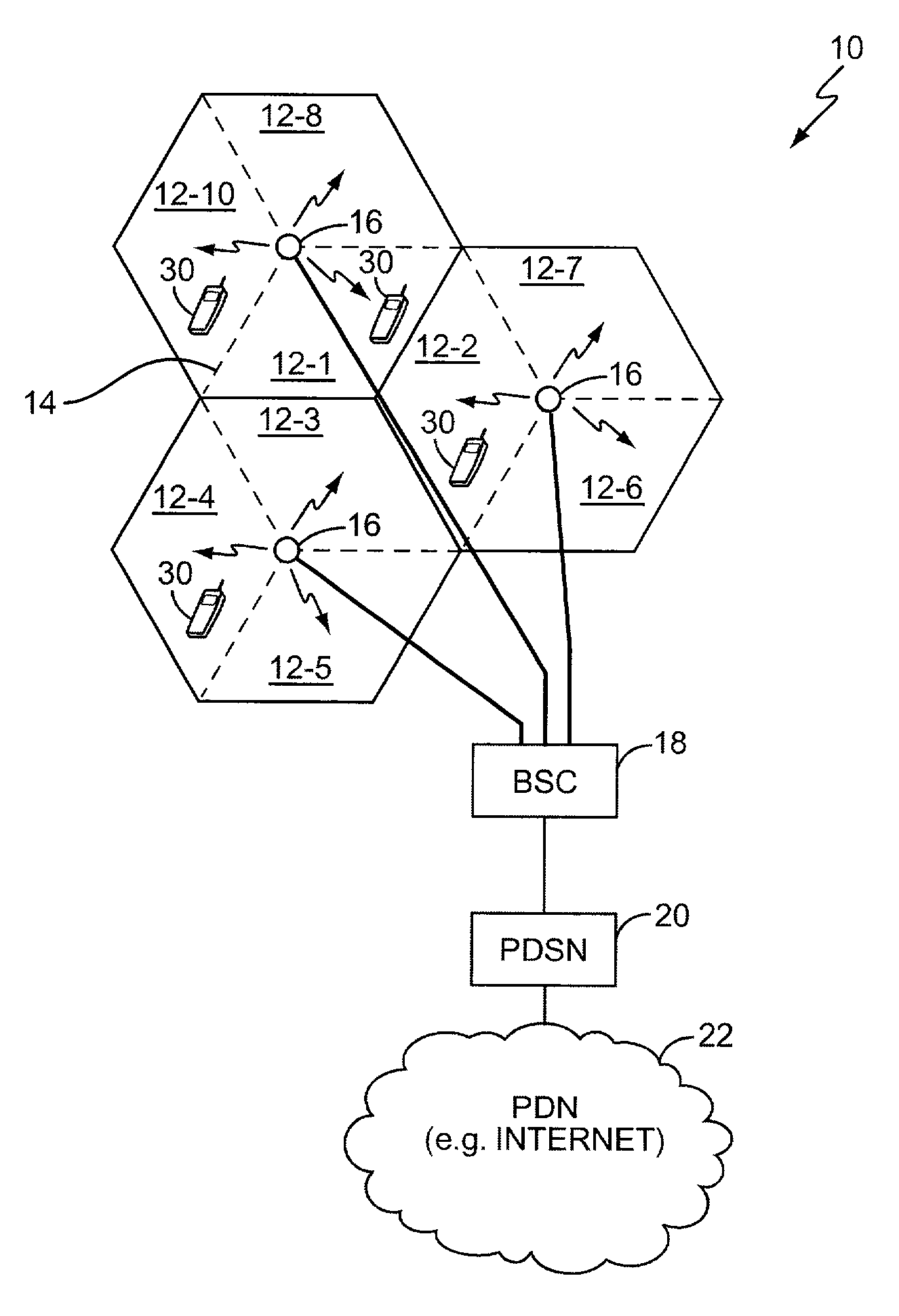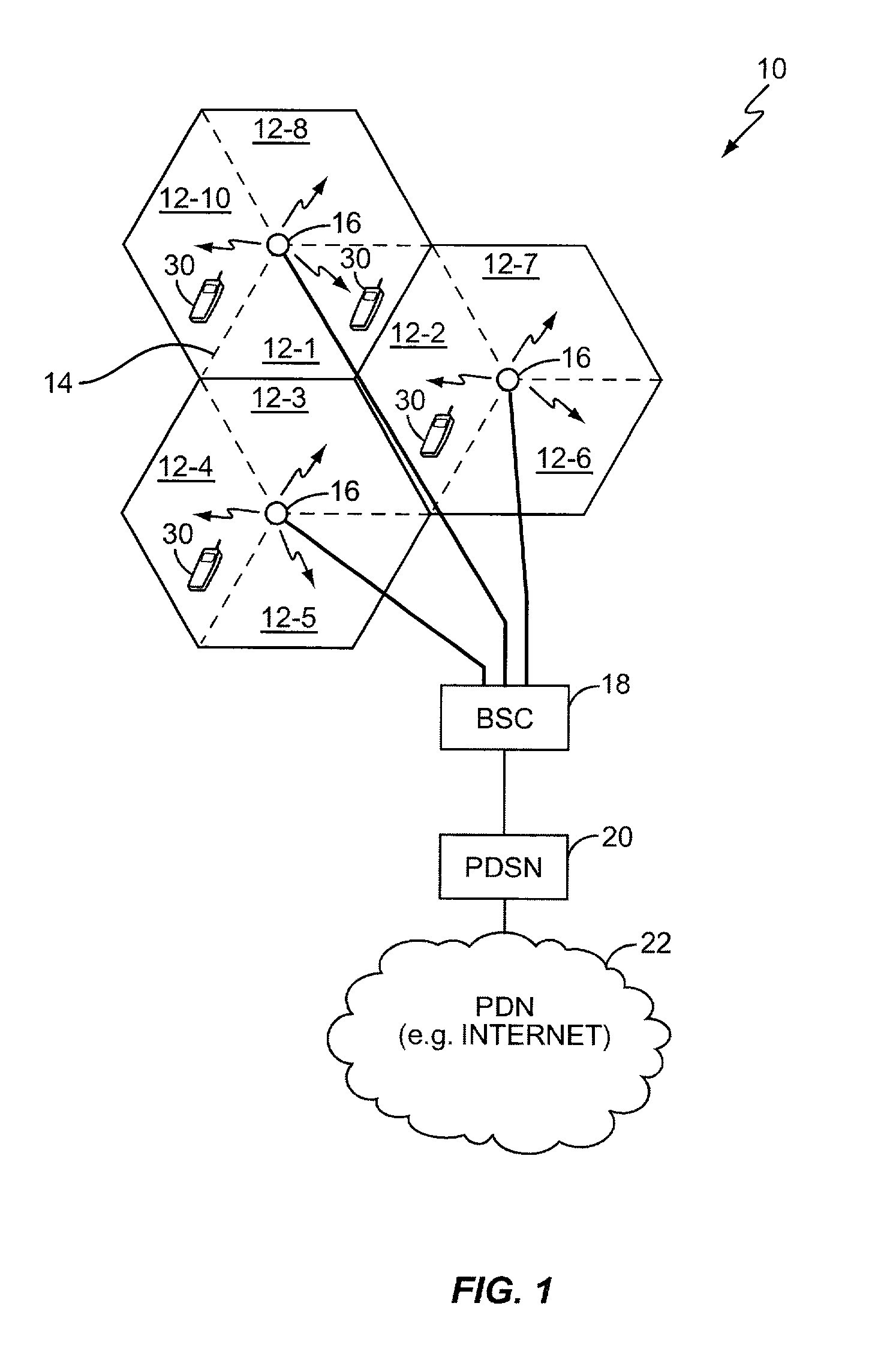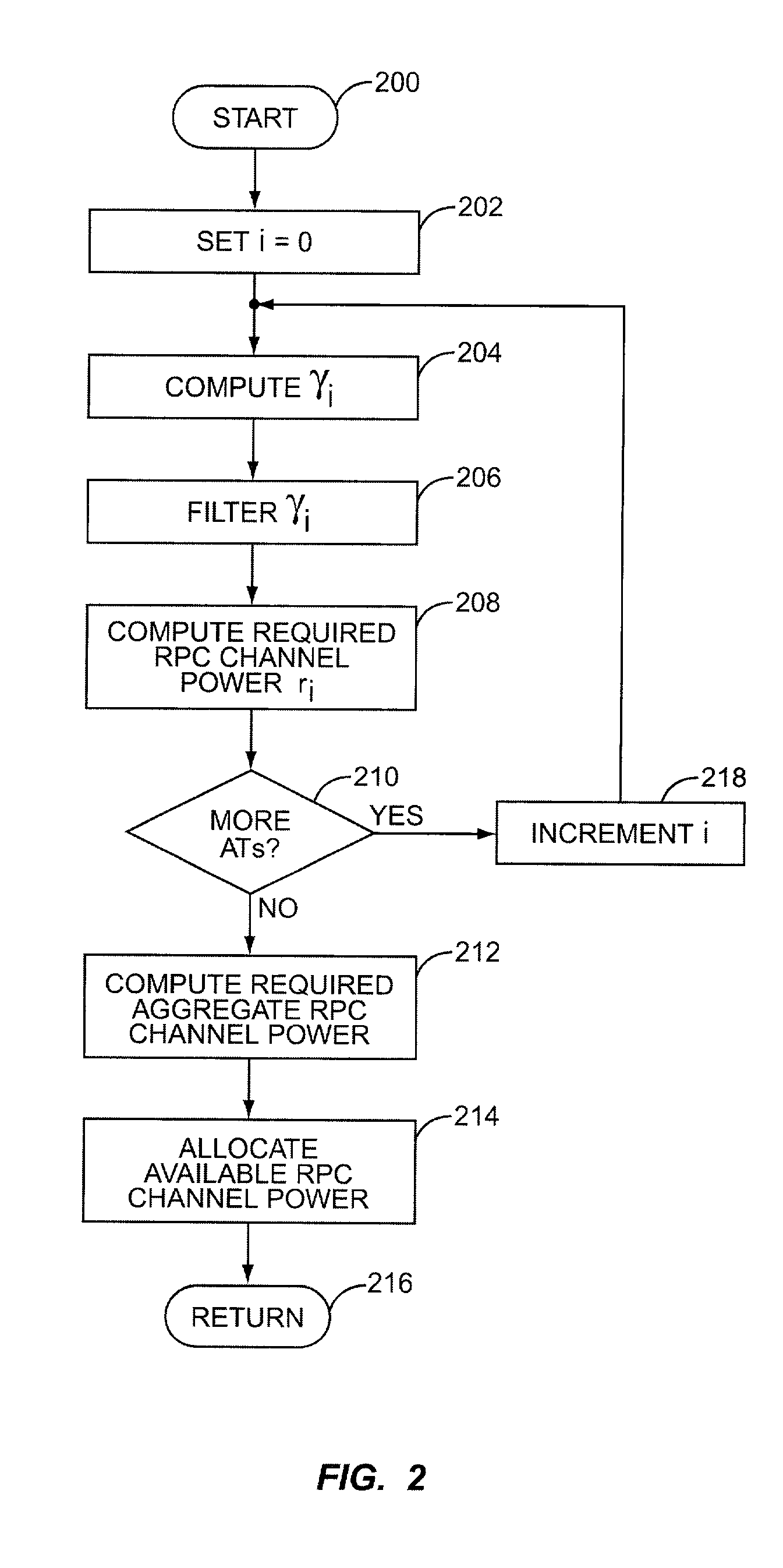RPC channel power control in a HDR network
a reverse power control and channel power technology, applied in power management, electrical equipment, substation equipment, etc., can solve the problems of a large number and the power of the aggregate rpc channel, which is the rpc channel power allocated to the total number of terminals active within a given network sector, and is more than near to meeting the actual rpc channel power requirements of a majority of terminals at any given tim
- Summary
- Abstract
- Description
- Claims
- Application Information
AI Technical Summary
Benefits of technology
Problems solved by technology
Method used
Image
Examples
Embodiment Construction
[0020]Exemplary details presented in the following discussion describe control of the transmit power associated with the Reverse Channel Power (RPC) channels used in high data rate (HDR) packet data wireless communication networks based on the TIA / EIA / IS-856 standard. It should be understood that techniques outlined herein may be generally used where a received signal lacking explicit power control data nonetheless may be used to derive power control information for an associated transmit channel.
[0021]Turning now to the drawings, FIG. 1 is a diagram of an exemplary wireless communication network generally referred to by the numeral 10, and which may be configured in accordance with TIA / EIA / IS-856 standards. Those skilled in the art will appreciate that the network 10 appears in simplified form to aid clarity of discussion. Actual implementations of the network 10 may include items not shown in this diagram, such as home location registers (HLRs), visitor location registers (VLRs), ...
PUM
 Login to View More
Login to View More Abstract
Description
Claims
Application Information
 Login to View More
Login to View More - R&D
- Intellectual Property
- Life Sciences
- Materials
- Tech Scout
- Unparalleled Data Quality
- Higher Quality Content
- 60% Fewer Hallucinations
Browse by: Latest US Patents, China's latest patents, Technical Efficacy Thesaurus, Application Domain, Technology Topic, Popular Technical Reports.
© 2025 PatSnap. All rights reserved.Legal|Privacy policy|Modern Slavery Act Transparency Statement|Sitemap|About US| Contact US: help@patsnap.com



